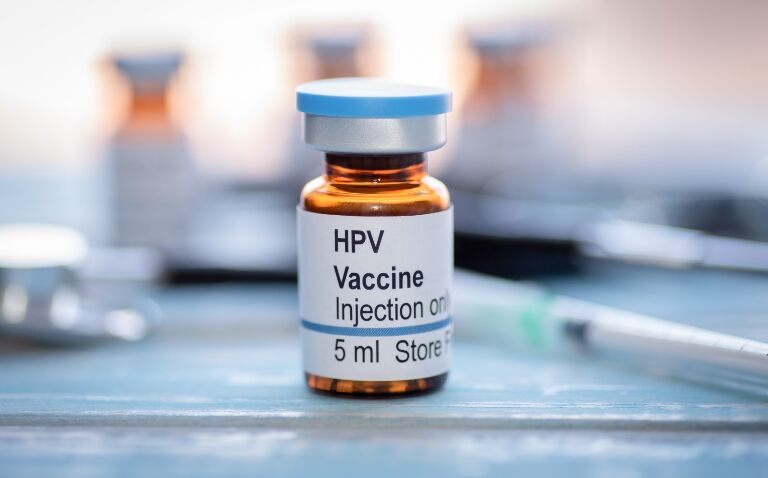Vaccination against human papillomavirus (HPV) appears to have changed the mix of HPV strains in circulation, say researchers who have spotted the ‘strain replacement’ for the first time.
An analysis of data from 60,000 young women in Finland who took part in a trial of the HPV vaccine where different cities adopted different approaches also found a decrease in more strains of the virus where girls and boys were both vaccinated.
Four years after vaccination, they found that the vaccine had markedly depleted targeted cancer-causing HPV types in the girls-only vaccine groups as well as the communities where boys and girls had been immunised.
Where boys and girls were vaccinated, there was also an increase of HPV types with lower cancer risks filling the gap left by the cancer-causing vaccine targeted strains around four to eight years after the vaccine was given.
The findings raise questions over potential changes to cervical cancer screening programmes in the future but UK experts said it was too soon to come to any conclusion.
Writing in the journal Cell Host and Microbe, the team said the diversity of strains found were similar to communities where no vaccination had been done, only without the cancer-causing strains targeted by the vaccine.
Risk of overdiagnosis with HPV screening
Study leader Dr Ville Pimenoff, an evolutionary biologist from the Karolinska Institute, Sweden, and University of Oulu, Finland said: ‘HPV vaccine is effective to clear most cancer-causing HPVs, and what we have observed here is the subsequent new equilibrium of untargeted HPV types interacting with the host communities.’
He added: ‘Importantly, the increase of vaccine-untargeted low-cancer-risk HPVs do not increase the risk of cancer.’
The researchers suggested that the findings could lead to the redesign of HPV screening approaches for cervical cancer prevention, which include testing for HPVs with lower cancer risks.
With the increase of low-cancer-risk HPV types in the vaccinated population, ‘current screening is likely to result in over-diagnosing individuals who are not at risk, he added. ‘That would be a huge burden for the healthcare system.’
Professor Anne Mackie, director of the UK National Screening Committee said the study was very welcome but more research was needed and the committee has commissioned a modelling study to help understand the likely impact of potential alternative screening strategies on the vaccinated cohort in the future.
She said: ‘The routine offer of HPV vaccination for girls started in 2008 and has successfully reduced the risk of infection in younger age groups.
‘However, most women in the eligible age range for screening (25 to 64) have not received the vaccine and may have been exposed to infection previously.
‘A high-quality cervical screening programme will continue to prevent cases of cervical cancer in this non-vaccinated population over the coming decades.’
Professor Stephen Duffy, professor of cancer screening at Queen Mary University of London said a major finding from the research was that immunising both boys and girls is the best policy.
‘While we should not rush to change screening policy as a result of one study, it would be prudent to check if these results are replicated elsewhere, and to consider the implications for which populations we screen and how we screen them.’
Targeting cervical cancer elimination
This comes as NHS England announced plans to eliminate cervical cancer by 2040 through increasing uptake of the HPV vaccine and cervical screening.
As part of a new vaccination drive, NHS England will support health and care professionals to identify patients in most need of the HPV vaccine via ‘targeted outreach’ and offering jabs in convenient local places such as libraries and community centres.
The NHS App will undergo expansion so that people can view their full vaccine record and book appointments in a ‘new dedicated space’ – currently only Covid and flu vaccination status is visible, but this will be increased to all 15 routine vaccine-preventable diseases, including HPV.
The NHS will also look to boost cervical screening by trialling ‘self-sampling’ to see if it could become part of national screening.
Last year, over five million people aged 25 to 64 were invited for screening, which NHS England said is ‘more…than ever before’.
‘Some of the most powerful tools’
NHSE’s national director for vaccinations and screening Steve Russell said vaccination and screening are ‘some of the most powerful tools’ for preventing disease.
‘We have learnt invaluable lessons from the pandemic, with our hugely successful Covid-19 vaccine programme saving thousands of lives, and our vision for the future of vaccination draws on those learnings, with plans to educate millions more people on the importance of vaccination, while making it easier than ever before to access vaccines online,’ he added.
NHS Providers’ director of policy and strategy Miriam Deakin said they ‘welcome’ the pledge and ‘innovative strategies’ that demonstrate a ‘forward-thinking approach to healthcare’.
She said: ‘These measures not only aim to improve accessibility but also ensure that health services are more responsive to the needs of diverse communities.
‘Ensuring healthcare staff have the resources and training needed to effectively implement these plans is crucial for success.
‘A focus on education and increasing public awareness about the importance of HPV vaccination and regular cervical screening is also vital.’
According to the World Health Organization, cervical cancer is considered to be eliminated when its incidence rate is lower than four per 100,000 women.
Versions of this story were originally published by our sister publication Pulse.










